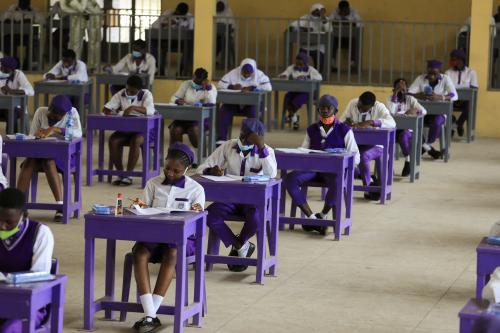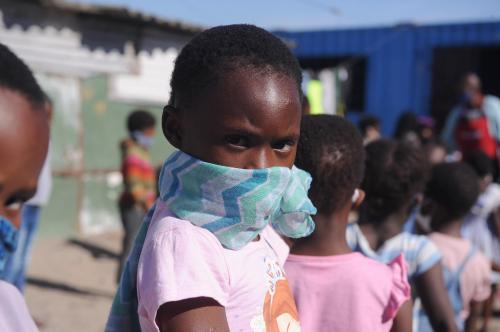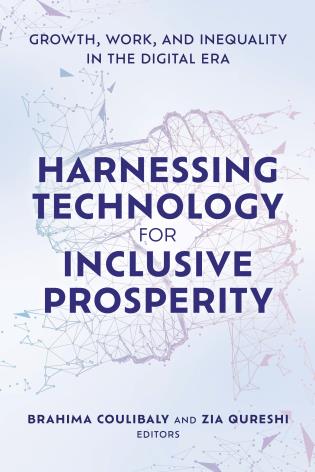Below is a Viewpoint from Chapter 3 of the Foresight Africa 2021 report, which explores top priorities for the region in the coming year. This year’s issue focuses on strategies for Africa to confront the twin health and economic crises created by the COVID-19 pandemic and emerge stronger than ever. Read the full chapter on human development.
 The COVID-19 pandemic has exposed the challenge created by high-level, aggregated data when addressing chronic food security and other lasting challenges affecting Africa—namely the masking of community-level differences, which inhibits the effective distribution of resources in the region. Technological advancements now bring clarity to these gaps, equipping today’s generation of committed policymakers to tackle complex problems, especially those around food security. Until now, the best available data has been sparse, dated, and aggregated. Fortunately, data scientists have developed new machine learning (ML) models that can now produce reliable, local data for areas where data has been historically difficult or impossible to access.
The COVID-19 pandemic has exposed the challenge created by high-level, aggregated data when addressing chronic food security and other lasting challenges affecting Africa—namely the masking of community-level differences, which inhibits the effective distribution of resources in the region. Technological advancements now bring clarity to these gaps, equipping today’s generation of committed policymakers to tackle complex problems, especially those around food security. Until now, the best available data has been sparse, dated, and aggregated. Fortunately, data scientists have developed new machine learning (ML) models that can now produce reliable, local data for areas where data has been historically difficult or impossible to access.
This approach allows policymakers the opportunity to develop data-driven strategies that improve food security down to the neighborhood level. Within a continent of astounding diversity, this swift and localized understanding will be essential in mitigating the COVID-19 pandemic’s (and any future) threat to food security and providing stable access to food in its aftermath.
Already, we have witnessed the power of ML-produced data when helping to combat the health emergency of COVID-19. For example, at the onset, Fraym delivered hyper-local geospatial data to responders across the continent to help identify and understand community-level risks. In fact, geospatial data on sanitation, livelihoods, and behaviors were some of the first inputs guiding the National Action Plan in Kenya. Communications access data helped Zambian public health policymakers identify, quantify, and locate populations that internet- or phone-based data collection methods may have missed. ML-produced data enabled fast and targeted responses like these and countless others during the rapidly unfolding health crisis.
Similar technologies and data will transform policymakers’ understanding of multi-dimensional, local challenges to food insecurity, especially as the pandemic’s impact unfolds. In radically improving our understanding of communities that previously have remained one-dimensional or invisible in traditional data repositories, ML gives policymakers a new toolkit for allocating resources with the greatest impact and efficiency. Fraym has already begun to investigate more complex applications of this data, including adapting the International Food Policy Research Institute’s Hunger Index to rapidly quantify square-kilometer vulnerability to food insecurity (Figure 3.6). Similar creative approaches that maximize newly available tools can ensure that policymakers, health workers, and others tackling food insecurity among Africa’s most vulnerable communities can act upon granular insights that help them reach individuals faster, more efficiently, and more effectively. Even amid a pandemic, food security in Africa is not just aspirational, but achievable with the right tools supporting committed, data-driven decisionmakers.






Commentary
The future of data: Unmasking community-level differences to better address food insecurity
March 22, 2021